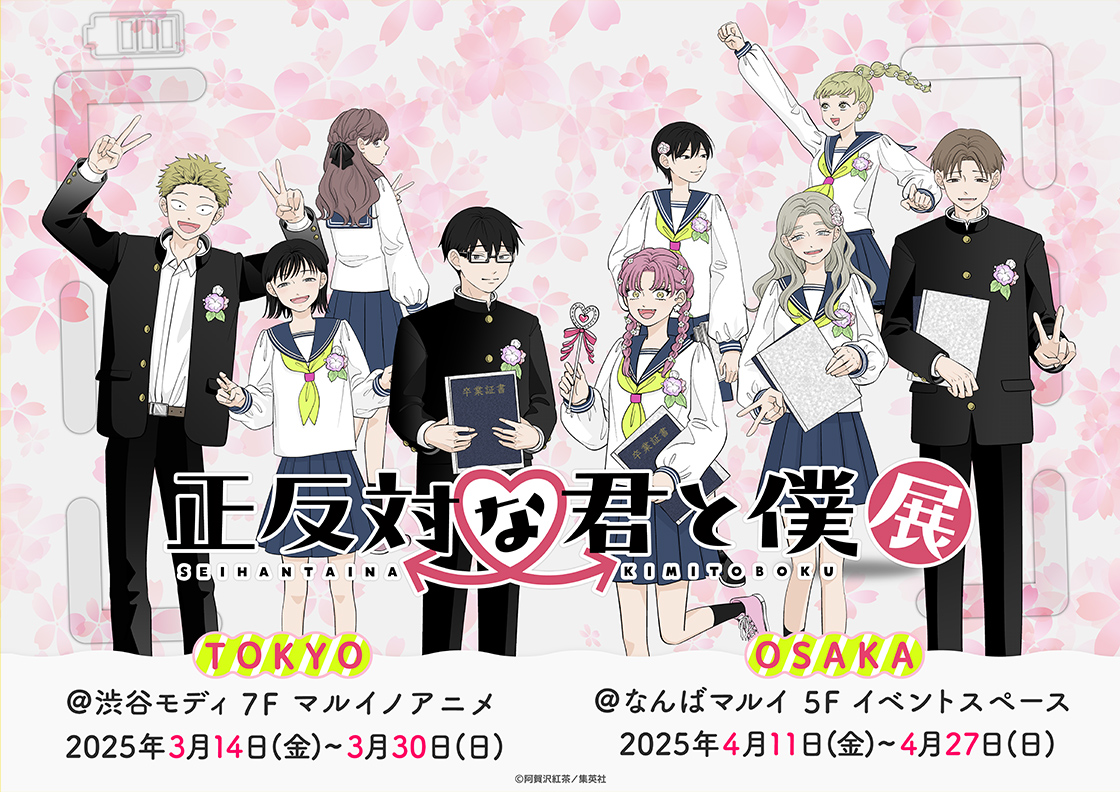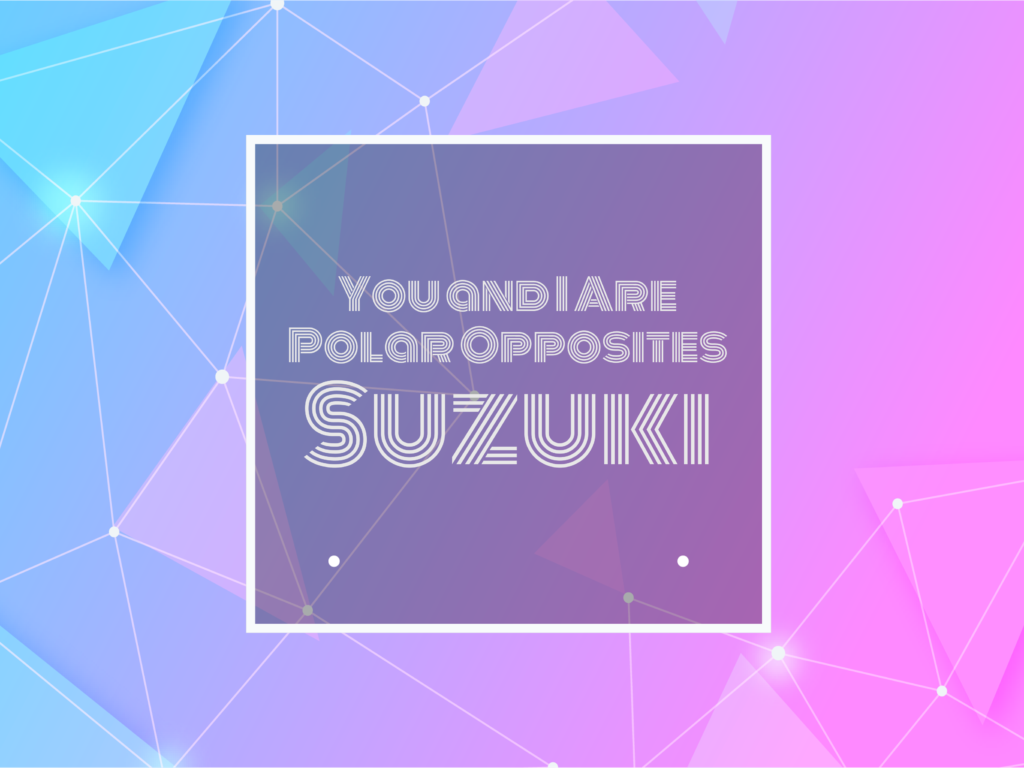I’ve always been fascinated by stories where two opposites find common ground, so I couldn’t wait to share my thoughts on Miyu Suzuki. She’s the lively yet surprisingly complex heroine of “You and I Are Polar Opposites,” a manga series soon to be adapted into anime in 2026. Let’s delve into what makes this beloved character—and the series around her—truly shine.
- Spoiler Alert: This article contains key plot details about “You and I Are Polar Opposites.”
Overview of “You and I Are Polar Opposites”
This romantic comedy follows high schoolers whose traits and outlooks clash delightfully—most famously Miyu Suzuki and Yusuke Tani, the epitome of “polar opposites.”
- Original Japanese Title: 「正反対な君と僕 (Seihantai na kimi to boku)」
- English Title: “You and I Are Polar Opposites”
- Serialization: Ran from 2022 to 2024 on Shonen Jump+
- Cumulative Sales: Surpassed 1.35 million copies (including digital) by late 2024
- Awards:
- Won 2nd place in the Web Manga category of the “Next Manga Awards 2022”
- Ranked 3rd in the Manga Taisho 2023
- Multiple other accolades and high bookstore recommendations
Miyu Suzuki: Her Role and Popularity
Miyu Suzuki stands as the central heroine of “You and I Are Polar Opposites,” instantly recognizable by her pink hair (which she really dyes, not just a manga embellishment) styled in a playful bun. Initially, she seems like a classic “gal”—energetic, social, and able to bond with almost anyone. Yet beneath that sunny exterior lies a girl who constantly reads the room and worries about how others might perceive her. This contrast between outward confidence and inward self-consciousness makes her one of the most compelling characters in the series.
Hiding Her Feelings for Tani
In Volume 1, readers discover that Miyu secretly harbors feelings for her quiet classmate, Yusuke Tani. Although she can strike up a conversation with anyone, she hesitates to express her deeper emotions for fear of gossip. As a result, she keeps her crush under wraps, pretending that all is normal—up until she decides she can’t go on living in denial. Once she confides in close friends, she finds the courage to openly confess to Tani (Volume 1, Chapter 4), kicking off the budding romance that symbolizes the “polar opposites” theme at the heart of the manga.
Personality and Quirks
- Bright Yet Self-Conscious: Miyu easily adapts to the people around her but often fails to assert her own opinions. Dating Tani gradually helps her break out of this pattern, showing readers how relationships can foster personal growth.
- Pink-Haired Gal: Her hairstyle isn’t just for show. In the story, she’s explicitly stated to have dyed her hair pink—reflecting her fun, slightly rebellious spirit.
- SFX for Running: One of the manga’s beloved running gags is how Miyu’s slow pace is depicted. She starts off with the playful onomatopoeia “mottamottamotta.” When she picks up speed, it becomes “watatatatata,” a mode humorously dubbed “Duruwa Mode” by fans.
- Surprisingly Disciplined: Despite thinking of herself as “not too smart,” Miyu has never been late or absent before the start of Volume 1 and meticulously keeps notes and completes her homework. This studious streak defies the stereotype of a carefree “gal,” adding another layer to her character.
158 cm (5’2″) of Spirited Determination
At 158 cm (5’2″) tall, Miyu isn’t portrayed as an especially imposing figure, but her liveliness makes her stand out in any scene. She’s the type of person to lead conversations yet internally fret about saying the wrong thing. Over time, readers watch her channel those worries into thoughtful consideration for others, making her growth all the more rewarding to follow.
Symbol of “Polar Opposites”
Miyu’s essential role is to embody half of the series’ titular “polar opposites,” with Tani representing her stark contrast. She’s bright while he’s reserved, she frets over popularity while he cares little for social approval—and yet the two discover genuine harmony. Their relationship challenges them both to step outside their comfort zones. Miyu, especially, learns to be more upfront about her feelings once she realizes that hiding them for the sake of appearances hurts her more in the long run.
By weaving together humor (her slow-running sound effects), sincerity (her diligent note-taking), and vulnerability (her anxieties about others’ opinions), Miyu Suzuki captures the hearts of fans and stands as the series’ most popular character. Her dynamic blend of strengths and flaws underscores the manga’s core theme: love and friendship can flourish even when two people seem worlds apart.
Notable Episodes and Relationships
- First Confession (Volume 1, Chapter 4):
Suzuki dramatically chases after Tani to confess her feelings, fighting against her own fear of gossip. It marks a major turning point where she decides to put her happiness over social scrutiny. - Summer Vacation & Cultural Festival (Volume 2, Chapters 9–12):
These chapters highlight Suzuki’s transformation. She organizes her first big solo date plan, showing how she steps out of her comfort zone. Her sincerity impresses Tani, and readers witness how open communication can strengthen a relationship. - Her Circle of Friends (Volume 3, Chapters 16–18):
In this portion, we see how her best friends—like the boisterous Yamada and the reserved West (Nishi)—draw strength from Suzuki’s boldness, even as she continues to struggle with her own self-consciousness.
Cumulative Sales, Awards, and Why It’s Special
By Volume 4, “You and I Are Polar Opposites” had already exceeded 1 million copies in circulation, reflecting its explosive popularity. As of 2024, the number stands at over 1.35 million. Critics and fans alike praise the manga for its realistic dialog, swift comedic timing, and endearing “opposites attract” romance.
Several major awards, including second place in the “Next Manga Awards 2022” and third place in “Manga Taisho 2023,” helped shine a spotlight on the series. But perhaps the most persuasive endorsement is the overwhelming fan love for Miyu Suzuki—her duality of bright cheer and genuine vulnerability resonates strongly with readers.
2026 Anime Adaptation

With the hype building steadily, an anime adaptation has been confirmed for 2026. Viewers can expect to see all the beloved story arcs come to life, including Suzuki’s comedic interactions with Tani and her depth of character that goes beyond surface-level impressions. If adaptations follow the manga closely, we’ll likely see major turning points—like that tear-jerking scene in Volume 3, Chapter 14—brought to the small screen in vivid detail.
FINAL THOUGHT
Personally, I adore how Miyu balances her buoyant charm with a sincere effort to communicate. Whenever she feels anxious about how Tani or her friends might perceive her, it’s a reminder that even the most confident-looking people struggle internally. I’m hoping the upcoming anime captures those subtle emotional beats, especially the heart-stopping moments in Volume 3.
In essence, “You and I Are Polar Opposites Suzuki” highlights the complexity of a seemingly carefree heroine. Suzuki’s arc, from concealing her genuine feelings to openly sharing them, forms the groundwork of this manga’s emotional core. I love how she grows into someone who can gently push others to be more honest, too.
Below are articles related to this topic. If you’re interested, feel free to explore!







